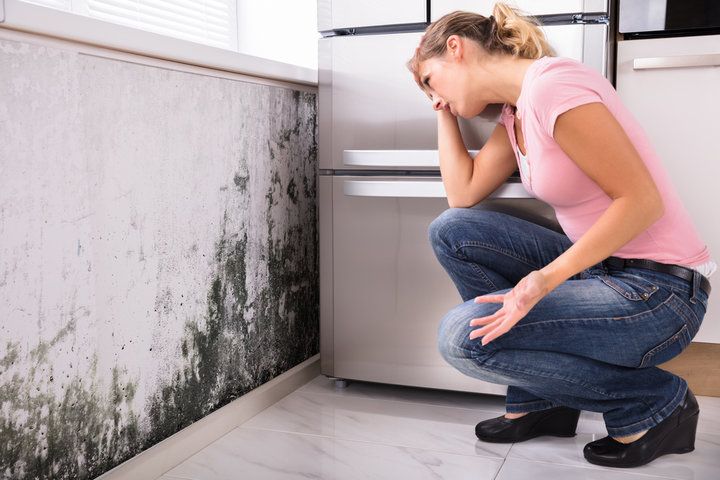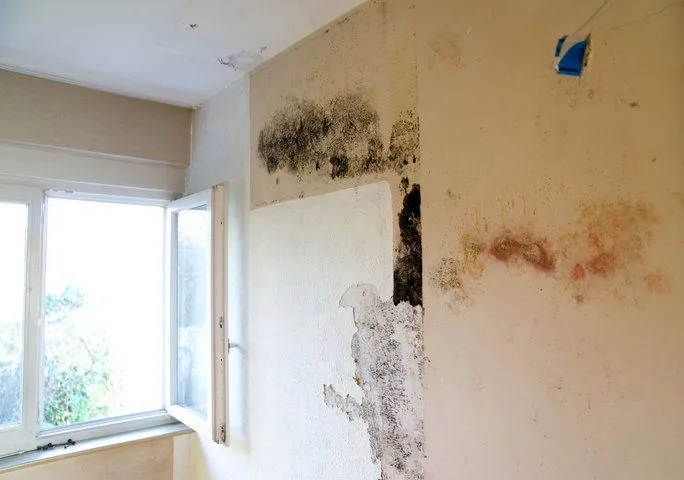Most of us go about our daily lives without considering the unseen factors that affect our health. When it comes to our homes and workplaces, fresh air quality is often taken for granted. We may invest in air purifiers and diligently replace filters, but how frequently do we consider the role of mold when determining air quality?
Mold has been a hot topic in public health for years, with various strains linked to multiple health issues, ranging from allergies to respiratory problems. Yet, mold spores, or airborne mold, remain elusive, growing out of sight in unexpected areas. This comprehensive guide will explore the telltale signs of mold growth, and how it affects air quality.
How Mold Growth Becomes an Indoor Air Pollutant
Mold growth is more than just a nuisance for homes; it also poses a significant threat to indoor air quality. If precautions aren’t taken, lingering mold spores can affect every aspect of your living space. But what causes mold to appear in the first place?
Mold thrives in damp, warm, and dark indoor environments, making bathrooms, basements, and kitchens particularly vulnerable. Poor ventilation and high indoor humidity create a breeding ground for extensive mold growth.
Once mold spores settle into a damp surface, they can begin to form a network of filaments that spread and grow. These filaments, known as hyphae, extend deep into the substrate they attach to. When conditions are right, the mold releases spores, seeking new colonizing areas.
Signs That Mold Could Be Affecting Your Home’s Air Quality

While some molds are noticeable due to their distinct color and texture, others can grow undetected in the shadowy recesses of your home. Humid and damp conditions, in particular, can produce microbial volatile organic compounds (MVOCs), which are the culprits behind many health-related issues. Here are some typical signs that mold might be impacting your indoor air:
Indicators of Potential Mold Growth
- Musty odor. Many molds produce a distinct smell akin to damp soil or rotten wood. If you notice a persistent musk, indoor mold growth could be to blame.
- Discoloration or staining. Off-color, fuzzy spots on walls, ceilings, and floors can indicate mold is present.
- Warped paint or wallpaper. Bubbles in paint or wallpaper can indicate excess moisture, leading to visible mold growth.
- Water damage. Stains, warping, or peeling paint or wallpaper can indicate moisture problems that foster mold growth.
Physiological Impact
- Uptick in allergy symptoms. Mold can induce allergic reactions and mold allergy, including sneezing, red eyes, runny nose, and a skin rash. If these symptoms flare up indoors and subside outside, it could indicate indoor mold exposure.
- Respiratory ailments. Mold spores can trigger people with asthma to have asthma attacks, wheezing, and shortness of breath, especially in those with health problems and sensitivities. Some people may also experience coughing or throat irritation.
- Mental health issues. Mold can affect mental health. If you’ve been experiencing higher anxiety, mood changes, or headaches with no explanation, mold growth may be a reason.
Testing Your Air for Mold
Detection is the first step in dealing with a mold problem. Various testing methods are available, from DIY kits to professional inspections.

Home testing kits are a cost-effective option for quickly diagnosing the problem. These kits allow homeowners to assess potential mold issues without needing professional intervention. They offer an accessible and straightforward way to collect samples from various home areas, enabling individuals to gain insight into the presence of mold spores and other contaminants. Home testing kits often come with detailed instructions and guidelines, making them user-friendly for individuals concerned about indoor air quality.
Professional Assessment
Air quality tests. Air sampling is a method of mold testing that gathers particles from the air, which are then sent to a laboratory for analysis. The lab examines the sample to determine the presence of mold spores and other potential contaminants. Surface sampling kits offer an alternative to air sampling. Instead of assessing airborne mold spores, these kits utilize swabbing techniques on surface areas.
Surface testing. Swab tests on suspected surfaces can confirm mold presence and type. Professional inspections provide the most reliable method for identifying mold in your air or walls.
Mold remediation specialists use advanced equipment and procedures to remove mold safely.
How to Remove Airborne Mold
If your mold test is positive, it’s time to tackle the problem head-on. Removing mold from the air should be part of a holistic remediation approach.
Improve Ventilation
- Use exhaust fans. Turn on exhaust fans in moisture-prone areas, like bathrooms and kitchens after bathing or cooking. You can decrease airborne mold by maintaining proper air circulation and reducing humidity.
- Increase airflow. Open windows and allow fresh air to enter the home. Use air conditioners or an air purifier. Doing so will help with moisture control and combat high humidity levels while consistently exchanging mold-affected air for fresh air.
- Install a dehumidifier. Installing dehumidifiers can help maintain relative humidity (RH) below 60%. When humidity levels exceed 60%, the likelihood of mold growth increases because mold requires higher water activity to thrive.
Cleaning Measures
- Surface cleaning. Scrub visible mold surfaces with a detergent solution and dry thoroughly to prevent regrowth. You can easily prevent mold growth by consistently wiping down problem areas with a household disinfectant.
- Professional removal. For more significant or toxic mold problems, it’s best to call a licensed professional. Eliminating mold spores can be challenging, especially if structural components are problematic. Improper removal may lead to the release of more mold spores into the air, potentially posing health risks in the future.
When to Call in an Expert
Sometimes, the mold problem is too big for you to handle alone. How can you tell when it’s time to call the experts?

The Extent of Growth
- Large areas. If the visible mold covers over 10 square feet, it’s beyond a DIY fix.
- Hard-to-reach areas. Mold in HVAC systems, crawl spaces, or behind walls and ceilings requires professional expertise.
- Materials are structurally compromised. If mold has caused structural damage and wood rot, it might be time to call in an expert. Improper removal could exacerbate the problem.
Personal Health Risks
- Toxic mold. Certain types of mold, such as black mold, can be extremely hazardous to handle without proper precautions. Using appropriate personal protective equipment (PPE) during remediation is essential to safeguard the health of workers.
- Health concerns. If anyone in your household is susceptible to mold illnesses, it’s best to err on the side of caution, and contact a professional for immediate mold removal.
Inspections and Remediation
- Inconclusive prior testing. If you’ve done an at-home mold test, and the results warrant a professional inspection, you can confirm the scope of the problem.
- Comprehensive solutions. Professionals remediate mold and address the underlying causes, like water leaks or poor ventilation. Depending on the mold remediation company, they may remove any contaminated material and help with the reconstruction process.
- Specialized equipment. Mold remediation experts often use specialized equipment, such as high-efficiency particulate air (HEPA) air filtration devices, equipment, systems and industry-grade disinfectants to remediate mold.
When in doubt, it’s always better to consult with a professional in indoor air quality such as a Industrial Hygienist (IH) to assess the building and develop a scope of repair. The investment could save you from further health complications and considerable remediation costs.
Concerned About Mold in Your Home? Contact PuroClean!
Don’t let mold problems escalate! Take action today and contact PuroClean for expert assistance with mold removal. Our experienced team is ready to address your mold concerns and restore your property to a safe and healthy environment. Don’t let mold compromise your home or health any longer—contact PuroClean now for reliable and effective mold remediation services. Our skilled IICRC-certified technicians are available 24 hours a day, seven days a week. Please give us a call at (800) 775-7876 or visit our online office locator to find an office near you.







